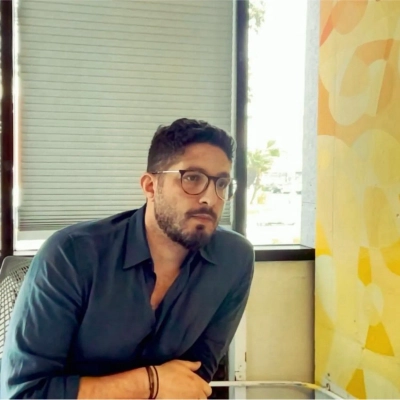8 Stress-Relief Techniques Learned From Therapy
Discover eight practical techniques for stress management drawn directly from therapeutic practices and validated by mental health professionals. These evidence-based methods offer simple yet effective ways to regain control during overwhelming moments, without requiring special equipment or extensive training. From breathing exercises to cognitive strategies, each approach provides actionable tools that experts recommend for immediate stress reduction in everyday situations.
Name Your Emotion for Clearer Solutions
A simple but powerful trick is to name the exact emotion. Saying "stressed" is too vague, like calling a design "bad." It's a blanket term that doesn't help you fix anything. Instead, pause and diagnose. Are you overwhelmed, dealing with a to-do list from hell? Frustrated because a process is broken? Anxious because the outcome feels out of your hands? Or embarrassed because you just flubbed something?
In a tense meeting, I notice my stress rising, so I ask myself, "What is this, really?" If it's frustration, I dig into data to clarify. If it's anxiety, I double down on research. If it's impatience, I work to refocus the room. The moment you name the feeling, stress shrinks and a path forward appears.
You can't solve "stressed," but you can solve frustration, anxiety, or impatience. The key is to label it first, then fix it.

Box Breathing Activates the Parasympathetic System
One technique a psychologist once taught me for managing stress in the moment is called "box breathing"—a simple yet powerful form of paced breathing that helps regulate the nervous system. The exercise involves inhaling for four counts, holding the breath for four counts, exhaling for four counts, and holding again for four counts before repeating the cycle. At first glance, it seems almost too simple to be effective, but its impact on calming both the body and mind is remarkable.
The psychologist explained that this technique works by activating the parasympathetic nervous system, which counteracts the body's fight-or-flight response. When we're stressed, our breathing often becomes shallow and rapid, sending signals of threat to the brain. Box breathing slows everything down—it gives the brain time to realize that we are safe, lowering cortisol levels and easing physical tension. It's used not just in therapy but also by first responders and athletes to stay grounded under pressure.
I started using it between patient sessions and before high-stakes meetings, but over time, it's become a part of my daily rhythm. For example, during a long commute or while waiting in line, I'll quietly practice a few rounds. When I feel my heart racing after a difficult conversation, I take 30 seconds to focus on this breathing pattern. It's subtle enough to do anywhere, and I've noticed it not only helps in the moment but also improves my emotional regulation throughout the day.
What I appreciate most about this technique is that it creates a pause between reaction and response. Instead of being swept up by stress, I can observe it, breathe through it, and choose how to proceed. It's a reminder that even when external circumstances are out of control, I still have tools to calm my internal environment. Over the years, this simple exercise has evolved from a coping skill into a small daily ritual—one that keeps me grounded, focused, and better able to meet both my patients and loved ones with calm presence rather than fatigue or reactivity.

Anchored Breathing Grounds Body Before Escalation
A psychologist once introduced a method called "anchored breathing," which quickly grounds the body before stress escalates. It involves exhaling first—completely—then taking a slow inhale while focusing on a physical anchor, such as the feeling of feet on the ground or hands resting on a surface. The focus shifts attention away from racing thoughts and back to the body's stability. I now use this before patient consultations or during unexpected schedule disruptions. The technique works because it interrupts the physiological spiral early rather than trying to calm down afterward. At RGV Direct Care, we often share it with patients managing chronic stress or anxiety, reminding them that effective coping doesn't require privacy or quiet—just presence and breath.

Narrate Your Stress Aloud to Reset
A psychologist I worked with once shared a simple trick that stuck with me: narrate what's happening out loud when you feel pressure building. It sounds odd at first, but saying things like "I'm getting overwhelmed because this meeting is running late" instantly slows down the emotional reaction.
I use it whenever the day gets hectic, before interviews, client calls, or tight deadlines. It forces me to step outside the stress for a moment and see it clearly instead of reacting to it. Most of the time, just naming what's happening is enough to reset my focus.
It's not about eliminating stress; it's about keeping it in perspective. That one-minute pause has probably saved me from countless overreactions.
Aamer Jarg
Director, Talent Shark
www.talentshark.ae

Orient to Environment Through Sensory Awareness
One of the most helpful techniques a psychologist ever taught me for managing stress in the moment was to pause and orient. Instead of trying to "calm down," I learned to look around the room and name three things I could see, hear, and feel. It's a simple nervous system reset that helps bring the body out of a stress response and back into the present moment.
I use it daily. Before important meetings, when I feel overwhelmed, or even during transitions between work and home. It reminds me that regulation isn't about controlling emotion, it's about reconnecting with safety in real time. From that grounded place, everything, focus, communication, decision-making, improves naturally.

Reshape Mental Interpretations Through Cognitive Reframing
One of the most powerful techniques for managing stress in the moment is cognitive reframing or the deliberate process of identifying and reshaping the mental interpretation that fuels distress. When stress arises, it is often not the situation itself that creates overwhelm, but the automatic thought attached to it such as "I can't handle this" or "everything is going wrong". By consciously pausing and asking, "what's another way to view this?" or "What would I tell a friend in this situation?" the mind shifts from reactivity to reflection. This activates the prefrontal cortex which is the area of the brain associated with reasoning and emotional regulation, this in turn dampens the amygdala's stress response. The result is not denial of difficulty, but a measured recalibration of perspective that transforms threat into challenge and helplessness into agency. In daily life, cognitive reframing becomes a habit of mental flexibility. During a busy day, it might mean reinterpreting a delayed meeting as unexpected preparation time or viewing a mistake as an opportunity to refine rather than fail. Over time, this consistent shift in interpretation changes neural patterns and makes the brain less reactive to perceived stressors. The practice empowers individuals to maintain clarity and self-compassion under pressure, turning moments of tension into opportunities for self-awareness and growth. This technique teaches that while external events may be unpredictable, the interpretation of those events, and therefore the emotional experience, remains within one's control.

Focus on Physical Assets Not Abstract Consequences
My business doesn't deal with "psychologists" or abstract stress management. We deal with heavy duty trucks operations, where stress in the moment is the immediate, high-stakes panic caused by an unexpected operational failure. The techniques for managing this are rooted in enforcing operational control.
The one technique I apply in my daily life—the operational equivalent of stress management—is the Anchoring Protocol to Physical Reality. I stop allowing my mind to engage with the financial or abstract consequences of the problem. Instead, I immediately force my focus onto the single, physical asset that is currently compromised.
If a high-value OEM Cummins Turbocharger shipment is lost, I don't panic about the lost revenue. I pivot my entire mental state to the single, verifiable fact: the last known GPS coordinate of the physical asset. My goal becomes non-abstract: Find the physical box and secure its contents.
I apply this technique in my daily life by eliminating all emotional and abstract variables from the high-stakes moment. By forcing my focus onto the physical, tangible asset, I regain absolute control over the situation and replace panic with disciplined, immediate action. This ensures that the stress is channeled into effective problem-solving, protecting the integrity of the business. The ultimate lesson is: You manage stress by refusing to allow your focus to drift into abstract fear, anchoring yourself only to the verifiable, non-negotiable reality of the trade.

Feel Body Sensations Instead of Thinking
I'm Anatole Noskov, CEO of Sparkly Maids and LlamaStay Management in Dallas-Fort Worth. I bootstrapped Sparkly Maids in 2017 with an $1,800 loan and grew it to over $1M in annual revenue while managing the business remotely from Hawaii. I also live with PTSD, so stress management isn't optional for me.
W**hat's one technique a psychologist has taught you for managing stress in the moment? How do you apply this technique in your daily life?
Somatic therapy techniques, specifically feeling sensations in my body instead of trying to think my way out of stress.
When I'm in a high-stress moment, like dealing with a difficult client or a major operational problem, my instinct is to mentally solve it immediately. That usually makes it worse. What my therapist taught me is to pause and actually feel where the stress lives in my body. Tight chest? Clenched jaw? Shallow breathing? Just noticing those sensations without trying to fix them immediately helps me regulate.
I also use urge surfing when I'm tempted to react impulsively. Instead of immediately firing off an angry email or making a snap decision, I sit with the urge for a few minutes. Most of the time, it passes or I respond more rationally.
Meditation and journaling help too, but honestly, the number one thing every therapist and psychiatrist will tell you is the boring stuff: sleep, hydration, proper nutrition, and physical exercise. When I'm sleeping six hours, dehydrated, eating garbage, and not moving my body, no amount of breathing exercises will fix my stress levels.
I learned this the hard way. I can't out-meditate a lifestyle that's actively breaking my nervous system. But when I'm sleeping eight hours, drinking water, eating decent food, and hiking regularly, I handle the same business problems with half the stress.
The in-the-moment techniques matter. But the foundation is taking care of your body like it's the operating system running your business. Because it is.
---
Company: Sparkly Maids and LlamaStay Management
Website: sparklymaids.com
Location: Dallas-Fort Worth, TX


